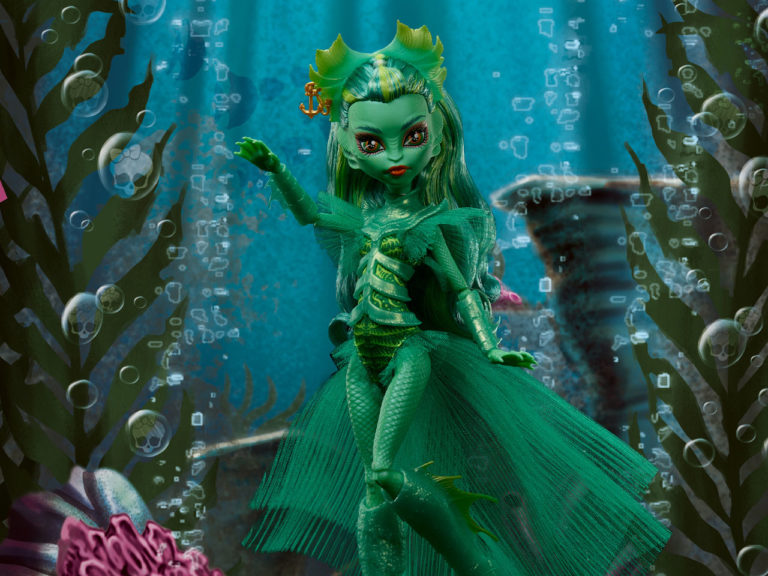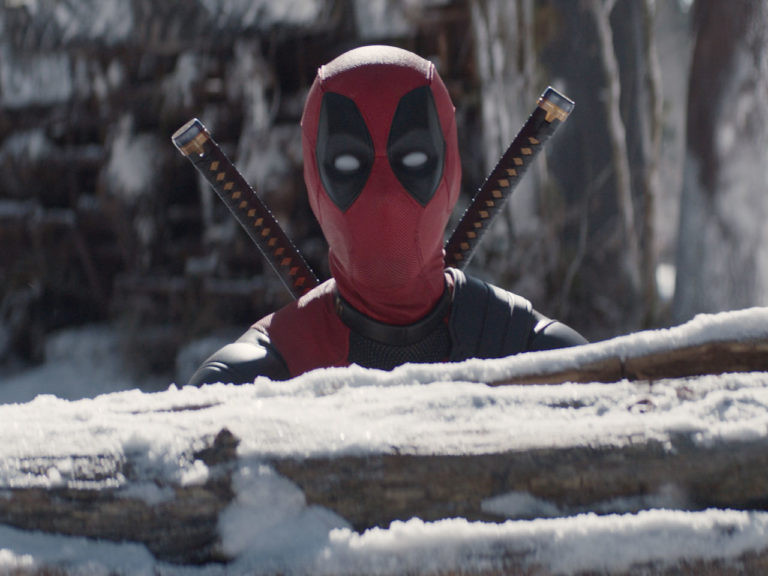

The “War of Jokes and Riddles” kicks off, and while it’s entertaining and good in many ways, I ultimately find myself asking many questions.

Before I say anything about the script, I need to praise Mikel Janin’s art. From the first page to the last, we are treated with some of the best art in comics today. David Finch has been churning out some great work on Batman, but this… This is stellar! Beyond the technical ability in his work – which is master class – his layouts and panels work to aide and assist Tom King’s narrative perfectly. After reading the issue, I found myself flipping through the pages a second and third time just to take in the art. Trust me when I tell you that Janin, alone, is worth the price of this book, and then some!

The Story
“The War of Jokes and Riddles” is an interesting conundrum, and I’m certain you’re going to see a range of opinions for this arc. The story takes place after Bruce’s first year as Batman, and is told from his perspective as he recants the events. Since stepping in on Batman, King has taken this approach of having a narrator guide a story from beginning to end, and I have a love/hate relationship with it. On one hand, this approach allows King to pursue themes beautifully, and I thoroughly enjoy that. On the other hand, I never feel as though I’m able to fully experience the stories, because I’m not actually experiencing them. I’m experiencing Batman’s recollection, as he recants the “big moments” of the narrative, while many of the nuances and textures of the story are left out.
The best way I can think of explaining my perspective, is imagine someone recapping the film Shawshank Redemption to you, compared to you actually watching it. With the explanation, you get the general sense of what takes place and how its impactful, but you aren’t allowed to live in the moment of the narrative, learning and discovering things with the characters as they happen… That’s the general sense I get from King’s scripts lately. We’re getting great moments, but the story never feels completely realized, which leaves me wanting more.
When you break it down, “The War of Jokes and Riddles” is essentially a telling of Joker and Riddler snapping. You should know, up front, that this isn’t Batman’s story. It’s the Joker’s and Riddler’s. Joker has been on a rampage in Gotham, and he’s giving both Batman and the GCPD a run for their money. To help try and solve Joker’s pattern and stop his next attack before it happens, the GCPD turn to Riddler for assistance – as we learn they’ve done many times over the year-plus that he’s been incarcerated. Interestingly, much like the Joker, he’s at his own whit’s-end.
Deducting not only the Joker’s plans, but his motivations, Riddler puts his own plan into play. This, in my opinion, is where the issue gets really good. Riddler begins his mission to break out of prison while Joker continues his killing spree across Gotham. It’s not their actions that make this great though (granted, Joker has some seriously twisted moments here), it’s their reason.
The reason behind all of this, is Batman. Not his mere existence, but the realization that he’s taken the joy from something both of these men cherish. Joker has completely lost his humor because of Batman. He’s literally lost his laugh. The unpredictable has now become predictable (Batman will win). Without his laugh and unpredictability, who is Joker? What is Joker? Nygma suffers the same realization, coming to terms that riddles aren’t the same for him anymore. These might seem like minor or juvenile reasons to snap, but when you look at it from the perspective of someone taking so much of who you are from you… It makes sense.
With these realizations in his arsenal, Riddler extends a hand to Joker believing that the best way to beat Batman, is by working together… But as we know, Joker isn’t one to play well with others. And like that, chaos reigns down on Gotham.
The Joker freaking shoots Riddler! How’s that for an answer to a team-up!?!
The Characters
Where the narrative misses the mark in some ways, the characterization is on point. This, too, could be debatable for some though. There are many loyalists out there, and they want to see certain characters presented a certain way – specifically Joker. If you’re ideal interpretation of Joker is Mark Hamill’s from Batman, The Animated Series, then this may not be the Joker for you. In this instance, Joker is more in-line with Heath Ledger’s interpretation, as well as Scott Snyder’s. We’re talking full-blown sociopath with psychotic tendencies looking to kill as many people as possible because he’s simply not happy… and it never relents.
From the opening sequence with Joker, to his last, he’s as disturbing as ever. The opening scene features him going through a cattle call of comedians hoping that one of them will get him to laugh. After killing one comedian, and telling the next to “clear the stage,” revealing a pile of bodies off-stage. But that’s just the tip of Joker’s insanity in this issue.
We later see Joker kill a cop point blank, then play with the corpses body as he maneuvers the dead cops mouth to smile and laugh… Yeah, this officially freaked me out. I mean, look at this!

Joker also goes on to shoot a driver while he’s in the car with him! Chaos and anarchy at its max.

Riddler is also presented well. This is very much the Riddler from Batman #23.1 The Riddler that’s a brutal murderer acting on a whim of vengeance. Some people have expressed distaste in Nygma becoming a killer of this level, but I don’t mind it. Yes, I do believe there’s a growing trend in Batman comics that every villain is a killer, but I also feel as though Nygma, in this continuity, has been pushed to this point, and I find it believable. I love darker interpretations, and to me this is the Edward Nygma that was meant for a Christopher Nolan Batman film… Considering that will never happen, we’ll just have to live with this interpretation.

While the characterization is great, I do, however, have two questions that came up during some scenes that have less to do with the character, and more to do with the narrative. When Riddler is breaking out of prison, he encounters a S.W.A.T. team of officers. They threaten to shoot him, and he starts saying the names of their loved ones – clearly a threat… But my question is, why not go ahead and shoot him? Are we supposed to believe Nygma has men on the outside prepared to kill each of these people if they guards kill him? I understand how the threat could get under someone’s skin, but I don’t think it would be enough for me to let you walk unless I had concrete evidence my family would be in danger because of your death.
Concerning the Joker, the scene where he shoots the cop… There are literally dozens of cops roughly twenty feet away! I know they’re dealing with an explosion – as well as the loss of a chunk of their force – but how did they not hear the gun shot? This is a minor detail, but it could have easily been fixed by having a silencer on the gun that Joker used.

Then there’s the scene where Joker kills the driver of the car he’s in. This causes the car to roll, and apparently breaks Joker’s neck. He then manages to go up to the top of a building, encounter Riddler, shoot him and leave him for dead, then escape Batman… It’s a little much. Had there been no reference of a broken neck, none of this would have bothered me. But it did, and it all feels like it’s a little much. Again, it’s a small note, but I like my Batman characters because they are human and can be hurt. The moment they become invulnerable, they lose their allure.
Themes
As I mentioned earlier, themes play a large role here. There’s the commentary of both Joker and Riddler, and how far they’re willing to go (something we’ve yet to fully explore) when they’ve been backed into a corner and stripped of their identity. This same idea is teased concerning Batman at the end of the issue, and that has me intrigued to see what his character arc is for this story.
There are also parallels early in the issue to signify the impact Batman has had on the city, by comparing Gotham’s weather to its diminishing crime rate. Gotham is always covered with rain, snow, or blazing heat, so it’s a nice touch to see Batman’s success become mirrored with pleasant weather. This also presents the notion of false hope, or a false epiphany considering Bruce smiled and put himself to bed on such a beautiful day, only for the Joker to wreak so much havoc.
And finally, there’s communication.
Well… It looks like Selina may have said yes to Bruce’s proposal, because they’re both in bed together and Bruce is feeling the need to share (her left hand is shadowed, so we can’t be certain). These two opening up to one another is a constant that King has incorporated since “I Am Suicide.” The conversations between Selina and Bruce have been top-notch, and their arc through “I Am Suicide,” “Rooftops,” “Aftermath,” and now this, is easily the best aspect of Batman at the moment.
More than anyone else, Bruce feels he can be his true self with Selina, and it’s undoubtedly because he sees himself as something other than a hero. The whole point of circling back to the events of “The War of Jokes and Riddles” is so Bruce can share something with Selina… I don’t know what this could be – perhaps that Bruce has actually murdered someone while operating as Batman? – but I’d be lying if I said I wasn’t interested.

Recommended If:
- You want to see the Joker snap.
- You’ve wondered what Christopher Nolan’s interpretation of Riddler might look like.
- You want to see some potential hints concerning Batman and Catwoman’s relationship.
Overall: Is the debut of “The War of Jokes and Riddles” perfect? No. There are many perfect to near perfect moments, and considering the “shortcomings” of this issue are minor, I’m optimistic that this will be King’s best Batman story yet. Now we just have to wait and see how these lingering questions are handled… if their handled. But for what is essentially a prelude to an arc, I’m more than satisfied.
SCORE: 7.5/ 10


